If you want to increase the pressure, strengthen the major muscles of the core, tighten the abs to flatten them, and strengthen the shoulders and glutes, planks will help you.
Is it hard to believe that doing one exercise every day can improve your strength, physique, mood, and more? But it's true! This pose has many positive effects on your body. While it may not be the easiest exercise to do, doing it regularly will give you lifelong benefits.
In yoga, the plank or Phalakasana is a strength-building pose because it tightens all the large muscles of the torso as well as the shoulders, strengthening the neck, back muscles, glutes, quads, and abs. The plank is also known as the isometric stance. It contracts the muscles, forcing them to hold a predetermined position. You stand in the bar and your body goes to work.
This is the most popular exercise of all fitness programs, and it doesn't require machines, equipment, weights, and a gym. All you need is your body, desire and perseverance, and you can do it even at home!
Planks help speed up metabolism and improve blood circulation, and are suitable for everyone: beginners to advanced, men and women alike. You'll find this exercise in yoga, pilates, stretching, bodybuilding.
A seemingly simple static exercise seems to be just that. After standing at the bar for a minute, you'll realize that time doesn't fly that fast. By the way, the world record for men is 8 hours 1 minute 1 second. Women's record - 3 hours 31 minutes. So, you have something to fight for. Everything is in order now.
Useful properties of bars for health and weight loss
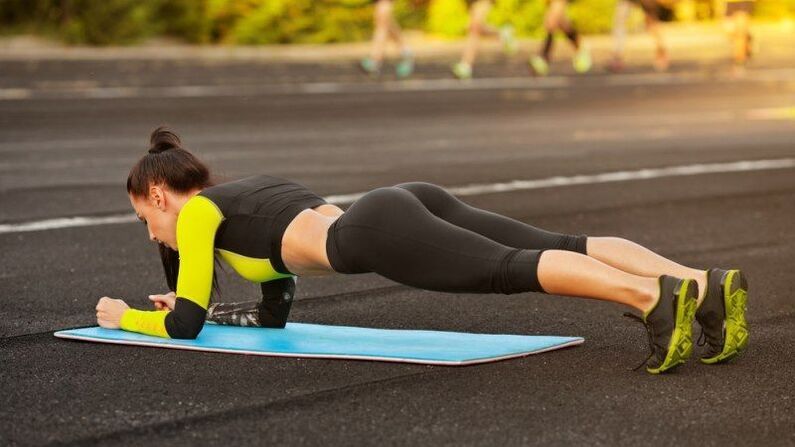
Exercise can not only tighten muscles, but also prevent and treat certain diseases. Exercise systematically to ensure the effect. The plank can:
- Prevention and elimination of the first manifestations of cervical and lumbar osteochondrosis;
- significantly improved posture;
- Alleviate spinal pain;
- promote blood circulation;
- speed up metabolism;
- Burn calories.
Note that the last two points indicate that this exercise helps with weight loss.
what muscles work
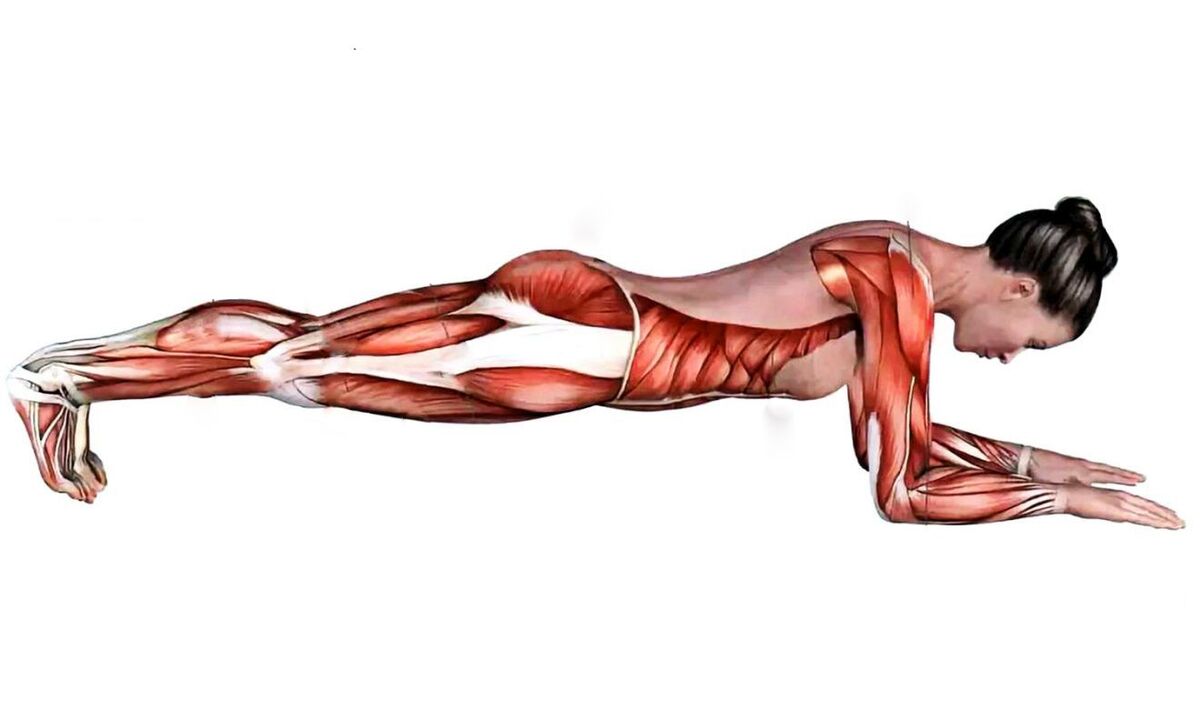
When performing a standard (classic) barbell, the following muscles work:
- Rectus abdominis and transverse abdominis;
- biceps, triceps, deltoid;
- lumbar paraspinal muscles;
- biceps, quadriceps thighs and calves;
- hip muscles;
- Muscles of the back and chest.
Beneficial function
- Strengthen the trunk muscles. This pose is most beneficial when you're trying to build core strength because it targets all muscle groups in your abs. . . you think abs are just abs? Planks work not only the abs, but also the stabilizers, as well as the outer abs responsible for the position of the hip and spine muscles.
- Muscles become more visible. Planks also work the shoulders, chest, legs, and back muscles. They will also grow. The function of this pose, combined with isometric tension, helps the muscles throughout the body "dry" and become more pronounced.
- Speed up metabolism. Muscle strength and mass increase with proper exercise, in addition to increased strength and good physique, there is another important property - accelerated metabolism! When you increase muscle mass, you speed up your resting metabolism, which in turn allows you to burn more calories.
- Prevent back pain. As your abdominal muscles get stronger, your body has to rely less on your back muscles to maintain your posture. Now, the trunk muscles are no longer the back muscles, but are used for all exercise and work, reducing the likelihood of back pain.
- Your posture improves. Improved posture is usually achieved by strengthening the health and strength of the back and trunk muscles. When you're in plank position, your back, neck, shoulder, and abdominal muscles have an organic chance to hold your body in place.
- Improve coordination. Isometric posture retention generally promotes improvements in coordination and balance. If you learn how to perform the plank proficiently, you will also be able to maintain an upright position more efficiently and stably.
- Improve joint and bone health. Planks allow you to train with heavy weights while reducing the unpleasant and negative effects associated with sports like running and jumping. When you stand in this pose, new living bone is created, which helps build healthier, stronger bones. Physical activity during exercise can also improve blood circulation in your joints, making them more flexible. Reduce friction.
- Improve mood and reduce stress. Like any other exercise, doing a plank boosts the release of the neurochemically active compound endorphins. Endorphins improve mood and create feelings of pleasure, and also help relieve stress. This pose also relieves tension because the body has a chance to stretch when you do this exercise.
Judging by the number of pluses it's implemented, it's not hard to see why it's so popular.
Whether you're just starting out or just adding a minute to this pose, remember that quality is always more important than quantity or duration. Once your pose starts to "break down, " you should stop and take a break and try again on the next set or the next day.
correct execution techniques

The algorithm for doing this is simple, but paying attention to the little things, learning to stand in the bar correctly, and proficient technique are the keys to success.
- Lie on your stomach. Place your elbows on the floor at shoulder height. Put your forearms on the floor. The bent arms should form a 90-degree angle. Straighten your legs, now resting on your toes and forearms. Feet can be together or hip-width apart. Make sure your elbows are under your shoulders.
- Tighten and straighten your entire body. Your body should be in a straight line from head to toe.
- Do not bend the spine, do not elevate the pelvis;
- tighten the press;
- Breathe evenly and calmly.
There are many types of such exercises. However, if you've got the hang of performing the classic plank, the other options will be fine.
Common mistakes
- Raise your pelvis above your head. The location of the bar was violated. What could this lead to? This is the most common mistake. People often want to lift their hips because it allows them to hold the pose longer. The problem is that when you lift your hips, most of the load is on your shoulders and the pose loses its meaning. This mistake leads to the development of shoulder and back pain. Keep your hips in a straight line between your heels and shoulders.
- Deflection of the neck area. Neck muscle overload. When performing, the neck should remain in a neutral position—the head is neither lowered nor raised. Imagine that both the head and neck are part of a straight line formed by the rest of the body. You are more likely to notice upper back or neck pain when the neck is not in this line and the head is down or up.
- Lift your elbows to the side, connect your fingers into the locks, and lower your head below the desired level. As a result, the shoulders are less affected and blood rushes to the head. If you put your hands on each other, this reduces the effectiveness of the pose. When your hands are on each other, the work of the abdominal muscles is reduced. Keeping your arms apart at all times, extend them in a straight line from your elbows, with your hands on the floor.
- Deviated lower back. If you continue to stand in this wrong position, you may have problems with your lower back. When you arch your back, the weight of your body no longer puts the load on the muscles, but the vertebrae and the connections between them carry the load. This mistake can lead to lower back pain. Correct the error by slightly rotating the pelvis. This will keep your back straight. It is also useful to tighten the hips.
- The hips are too low. If your hips are too low, the full weight of your body will rest on the lower vertebrae, although the muscles of the torso should work. It looks like it's easier to lean on the back than on the muscles, but that makes the exercise pointless.
- A rounded back is a sign that your shoulders are bent. People sometimes make this mistake to make up for a weak torso. This mistake allows people with weaker trunks to hold the pose for longer due to excessive tension in the back, neck, and shoulder muscles. To correct this mistake, move your shoulders down and away from your ears. Tighten the trapezius and mid-back muscles (upper back muscles) to prevent rounding of the back.
Beginner Tips
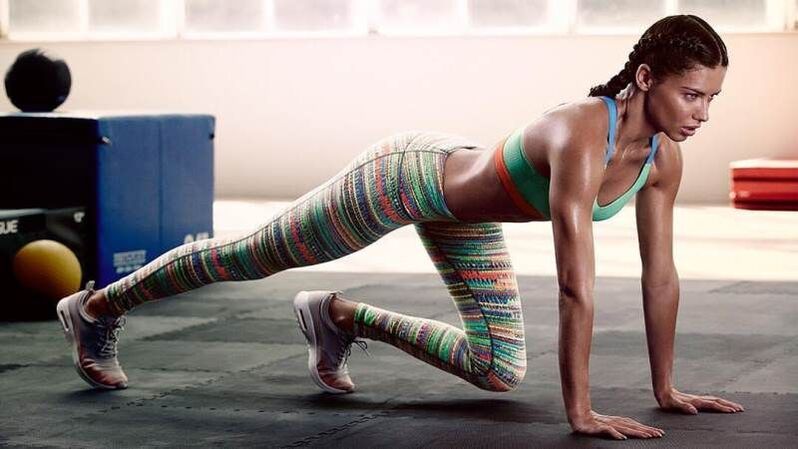
Do the exercise on a yoga mat or towel so the hard floor doesn't make your elbows uncomfortable. Before exercising, warm up for three minutes by stretching or doing some light exercises. On the first day, stand in the bar for only 20 seconds. This is enough for beginners. For ease of exercise, place your feet hip-width apart.
If you don't feel too confident even in this position, do it from your knees.
After a few days, as the muscles get stronger, complicate the bar from the knee by straightening one leg and holding the weight. Hold like this for 30 seconds, then switch legs. After completing the exercise, we recommend the Balasana - Child's Pose. This will relieve tension and relax the core muscles.
Can you do a bar during menstruation
Definitely yes. There are many things you can do during your period, especially exercise. Some young ladies might use the critical day as an excuse not to study and instead lie on the couch, flip through the gloss, and buy a few cakes. But you don't do it. If you experience a catastrophic drop in strength and mood during this time, it's best to slow down with training. If the critical days aren't all that important to you, stand on the threshold of health.
How long does it take to stand on a barbell to lose weight?
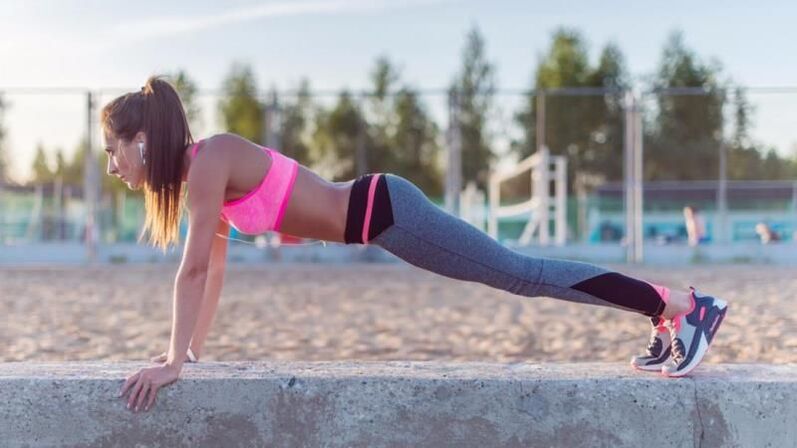
Not sure how long to stay in plank position? Hold until you find it difficult to maintain the correct technique, or until you feel your muscles start to ache and your body starts shaking -- then hold on for another 5-10 seconds.
If this is your first time doing this pose and you find yourself standing easily for 1 minute, congratulations. Your physical condition is satisfactory. But if you are completely new to the sport, then you can start with 10 seconds and repeat 5 times a day. After a while, as the muscles get stronger, do 4 rounds of 30 seconds, adding 1 second to the workout.
Remember, the most important thing is technology. Standing in perfect form for 20 seconds is better than arching your lower back for 40 seconds.
Do planks every day, but set aside one day a week to rest.
But you need to understand that everything depends on your body's capabilities. Start training and assessing your strength, and you'll be able to choose the best option and time, and you'll be in this position, healthy, and happy.
When it is better to do planks for weight loss is up to you. After all, it's good because it doesn't require anything, just your body and a little space. Exercise can be done in the morning, evening and day, but not immediately after meals and before bed.
How to stay on the tablet longer
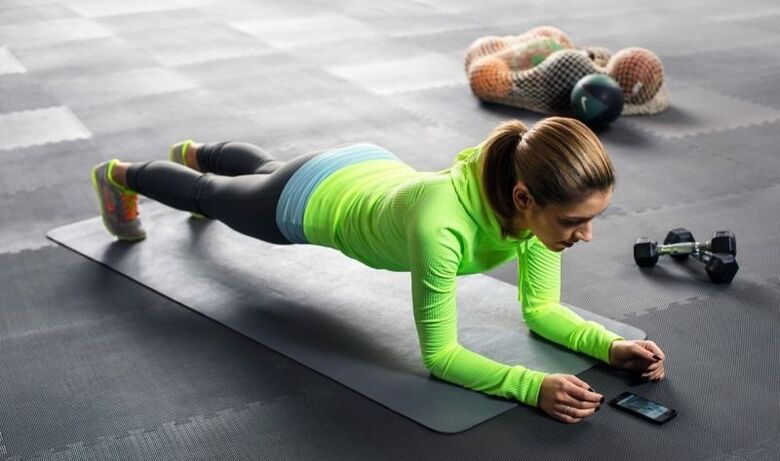
Regular training will allow you to stand at the bar longer and become more skilled. But other points are also important:
- Comfortable shoes and clothing. Make yourself comfortable in this sense. You shouldn't be distracted by the tailored straps of your top or slipped sneakers.
- A cushion or towel that's soft enough to keep you in the pose for longer. After all, the pain of a hard floor, the feeling in your elbows, can make you give up early.
- Airy room. You need oxygen.
- Turn on music.
- Be quiet, turn off your phone, and be careful not to inadvertently get distracted.
- Motivate yourself mentally. Text: "My body is working, my muscles are getting stronger, and I'm getting prettier! " Works great.
- Warm up before exercising.
- Use a stopwatch. It motivates you when you see how the seconds increase.
Popular plank options: techniques, nuances and differences
classical

You should rest on your toes and forearms. The arms are bent at a 90-degree angle at the elbows, with the forearms parallel to each other. Your body is a straight line from head to toe. Tighten your butt and leg muscles. Don't lower your pelvis, don't lift or lower your head. Breathe evenly.
Full arm or straight arm
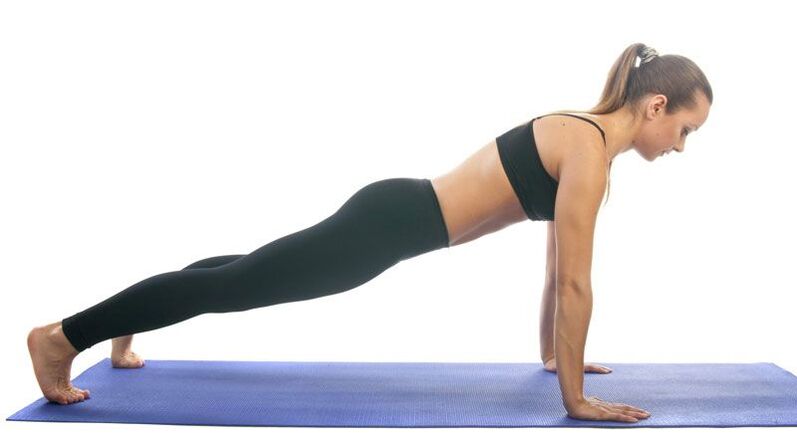
Straighten your arms and lift your hips, keeping your hands on the floor. For some people with a developed upper body, this plank may seem easier. This breed will give more stability to the shoulders than the classic. The fingers should be separated and the middle finger should point straight ahead. Rotate the inside of the elbow forward to engage the biceps.
side
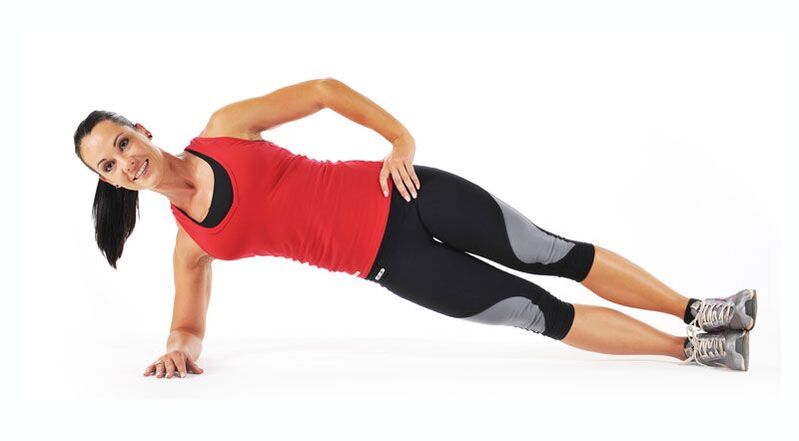
Lie on your right side with your feet on top of each other. Place your lower right elbow directly under your right shoulder and lift your thigh off the floor to form a straight line. You should feel tension in your lower back. Reach your left arm toward the ceiling or place it on your left thigh. Hold this position for a few seconds, then repeat the same movement for the other side of your body. If you feel that one side of your body is stronger than the other, keep doing the same number of repetitions on each side to make them equally strong.
side leg lift
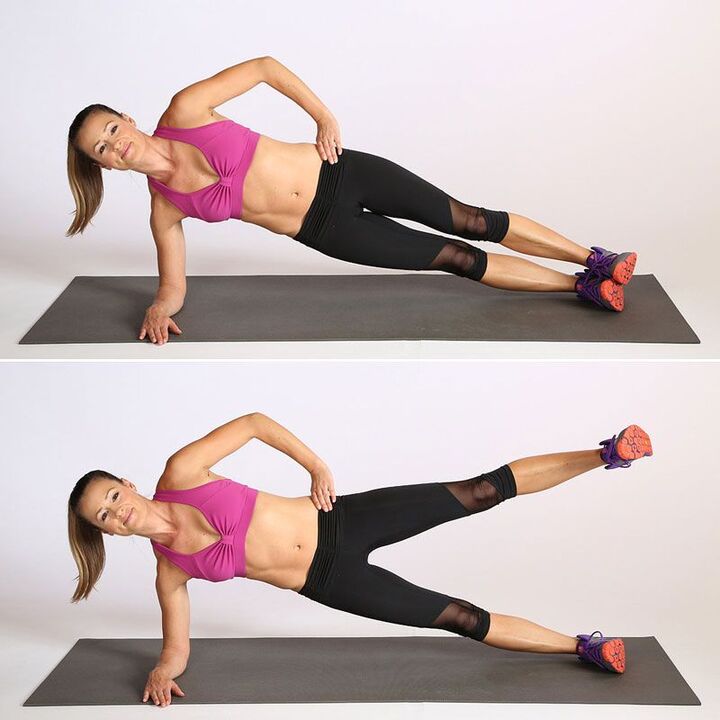
You can try this variation when you can hold the side plank for a minute. Rise to a side plank position and hold that position, lift your thighs a few inches off the floor, then tighten your muscles to control the motion of your leg, lowering it. Do 10 reps, then repeat on the other side.
Lower the hips laterally
Stand on the side plank, lower your pelvis off the floor, and return to the starting position. What is given? Oblique loads increase.
full leg lift
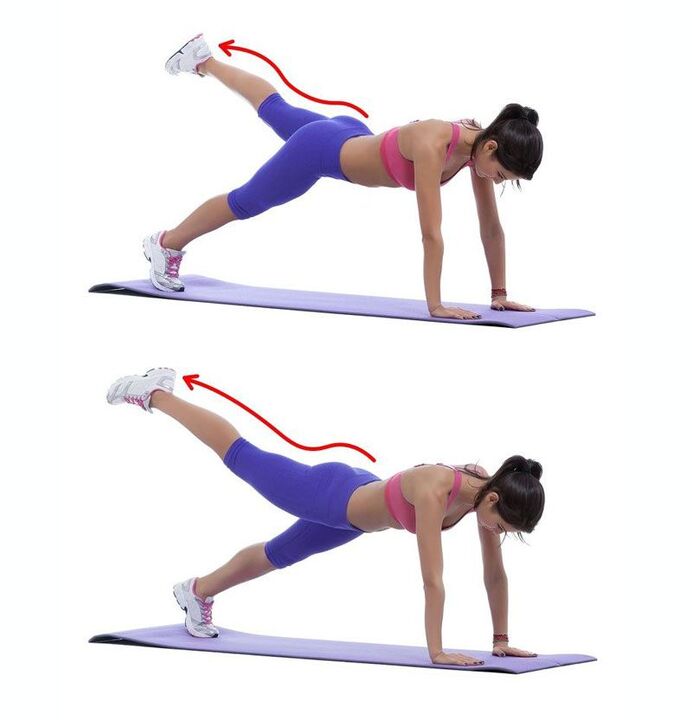
From a full plank position, place your hands on the floor, keeping your hips and abs tight. Lift one leg and squeeze your butt. Hold your leg in the air for a few seconds, then move to the other leg and do the same. It is not necessary to lift your legs very high, it is important to keep them away from you. Repeat 10 times with each leg.
reverse
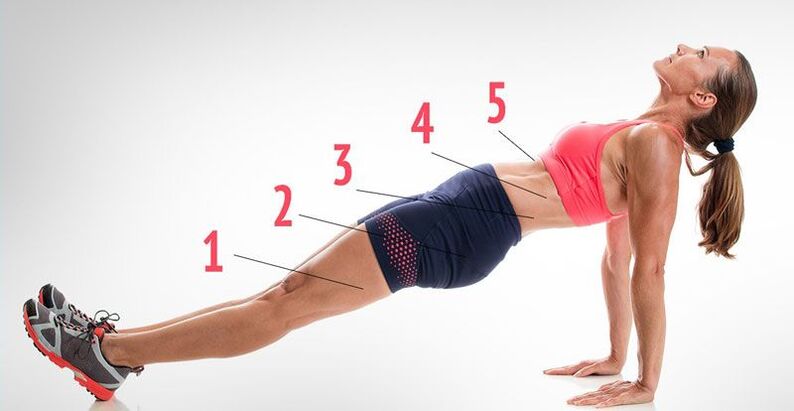
sit on the floor. Put your hands on the floor and retract a little. Lift your pelvis. The palms should be strictly below the shoulders. Opala on palms and heels. Tighten your body and it should form a straight line.
gym ball
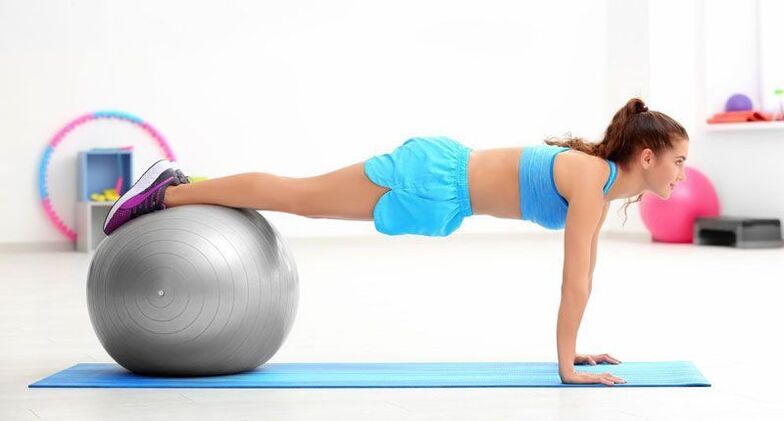
We perform the classic plank, but we lift our legs with the help of an exercise ball. The ball is at your feet.
army or dynamic
Start in a basic plank position with your forearms on the floor. Now, push first with your right hand, then with your left, moving to a full plank position. After that, put yourself back in the basic position, starting from the right side again. Do 10 reps on each side - 10 on the right side, then 10 on the left side.
rock climber or knee pull

Start in a full plank position, then tighten your abdominal muscles and use your lower abdominal muscles to pull your right knee toward your chest. Return the right leg to the starting position and repeat the exercise with the left leg. Continue to do 20-30 repetitions with both knees. You can do it fast or slow, the main thing is correct technique because it's more important than speed.
Alternately touching the shoulders
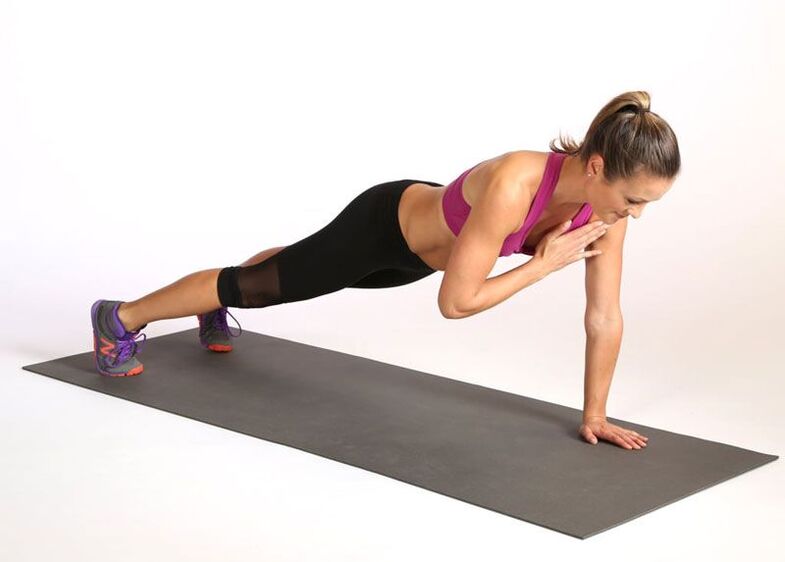
Start in a full plank position, keeping your hips as stable as possible. Extend your right hand toward your left shoulder. Put your right hand back in place and touch your right shoulder with your left hand. Continue to repeat this exercise 20-30 times.
But now you know a lot more about barbells than before, you ask, how many kilograms can you lose with exercise? Maybe the answer will throw you off, but even this 30-day fat-burning plan won't help you lose weight if your diet doesn't create a calorie deficit. This will help strengthen the muscles and make them stronger. If you want to lose weight, start burning more calories than you consume. A simple mathematical rule works in weight loss: If you gain more than you lose, all the excess becomes body fat. I hope we can learn how to save money the way our bodies store fat! Execute the plank by combining it with the following tips:
Helpful Tips for Training and Weight Loss
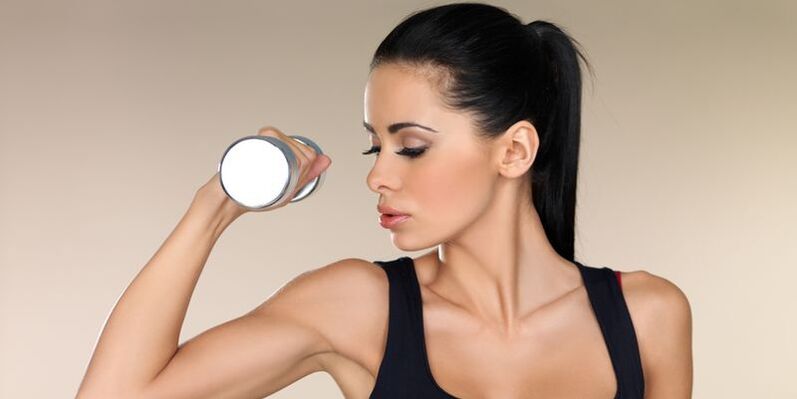
- Eggs for breakfast. Eating eggs in the morning has many positive effects, one of which is accelerated weight loss. If you replace the bread that many people eat for breakfast with eggs, you'll lose more calories and fat that day and feel better full.
- Drink coffee (preferably black). Coffee contains a lot of antioxidants and has many health benefits. The caffeine in a cup of coffee can speed up your metabolism by 3-11%. But sugar or other high-calorie ingredients should never be added to coffee, as that completely eliminates its benefits.
- Eliminate hidden sugars in your diet. Sugar is currently one of the most harmful components of the human diet. Many people consume too much sugar. Studies have shown that both sugar and fructose syrup are associated with a higher risk of obesity, diabetes and other cardiovascular diseases. If you want to lose weight, remove sugar from your diet. Pay attention to the labels on the package, even so-called "healthy" foods can contain a lot of sugar.
- Eat less processed carbohydrates. Refined or processed carbohydrates are found in pasta and white bread. These carbohydrates are usually made from grains from which all other nutrients such as protein and fat have been removed. These types of carbohydrates can cause insulin levels to rise. Insulin surges stimulate hunger and the desire to eat sweets. Refined carbohydrates are strongly associated with obesity. If you're going to eat carbs, eat them whole with natural fiber.
- Control section. Portion control or calorie counting can be very helpful. Counting calories at each meal can help motivate you to lose weight. Anything that gives you more insight into your food will help.
- Eat more protein. Protein is the most important thing for weight loss. Eating protein-rich foods will speed up your metabolism, allowing it to burn an extra 100 calories a day. At the same time, the food itself contains 400 fewer calories than you would normally eat. Also, you will lose the desire to eat at night and cravings for sweets.
- Add whey protein to your diet. If you find it difficult to add enough protein to your diet, start taking a protein powder supplement to get enough protein.
- Eat "real" food. If you want to be a healthy person, you have to switch to the Whole Foods menu entirely. If most of your food is unprocessed, these foods will fill you up, make it difficult to overeat, and it will be difficult to gain weight on this diet.
daily diet example
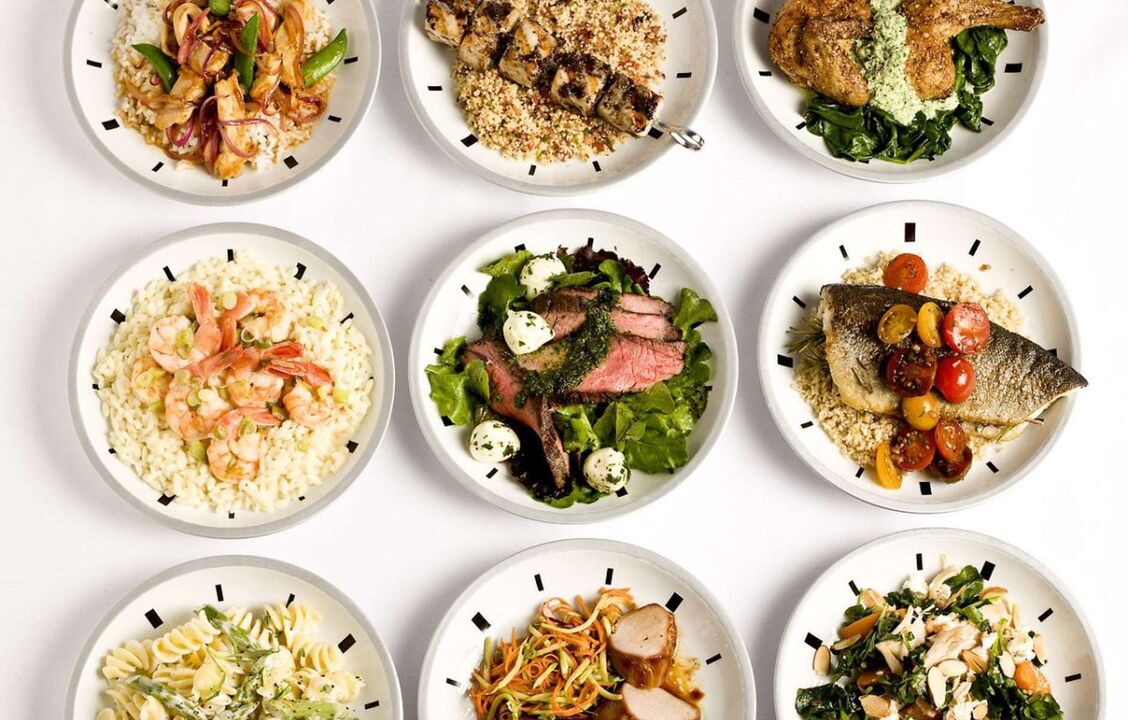
- Breakfast: 2 slices of whole wheat toast + 2 hard boiled eggs + hot sauce (optional)
- Snack: 1 cup of berries, such as blueberries + a handful of nuts;
- Lunch: 100 grams of salmon + avocado + 1 whole wheat bread + 1 cup of vegetables;
- Afternoon snack: broccoli and cauliflower + 2 tablespoons unsweetened yogurt;
- Dinner: 130 grams of lean steak + stewed carrots + Brussels sprouts + 1 tablespoon of olive oil;
- In the evening (maybe an hour) 150g of cottage cheese (of course, without sugar).
What else can you do to lose weight faster?
Aerobic exercise
Doing cardio (aerobic exercise) is a great way to burn calories and improve your physical and mental health. Aerobic exercise is particularly effective at removing belly fat, the unhealthy fat that accumulates around organs and causes disease.
Strength Training
This will speed up your metabolism and prevent you from losing muscle mass. Of course, not only fat loss, but also muscle building is important. Therefore, strength training is essential.
high intensity interval training
By not spending a lot of time exercising, you'll speed up your metabolism, increase your stamina, and burn extra calories.
Planks develop balance and train willpower and character. Just stand for a few more seconds each day and not let yourself give up and you will build your character and become stronger. Maybe this sport will be the beginning of a beautiful athletic body that you can be proud of.














































































